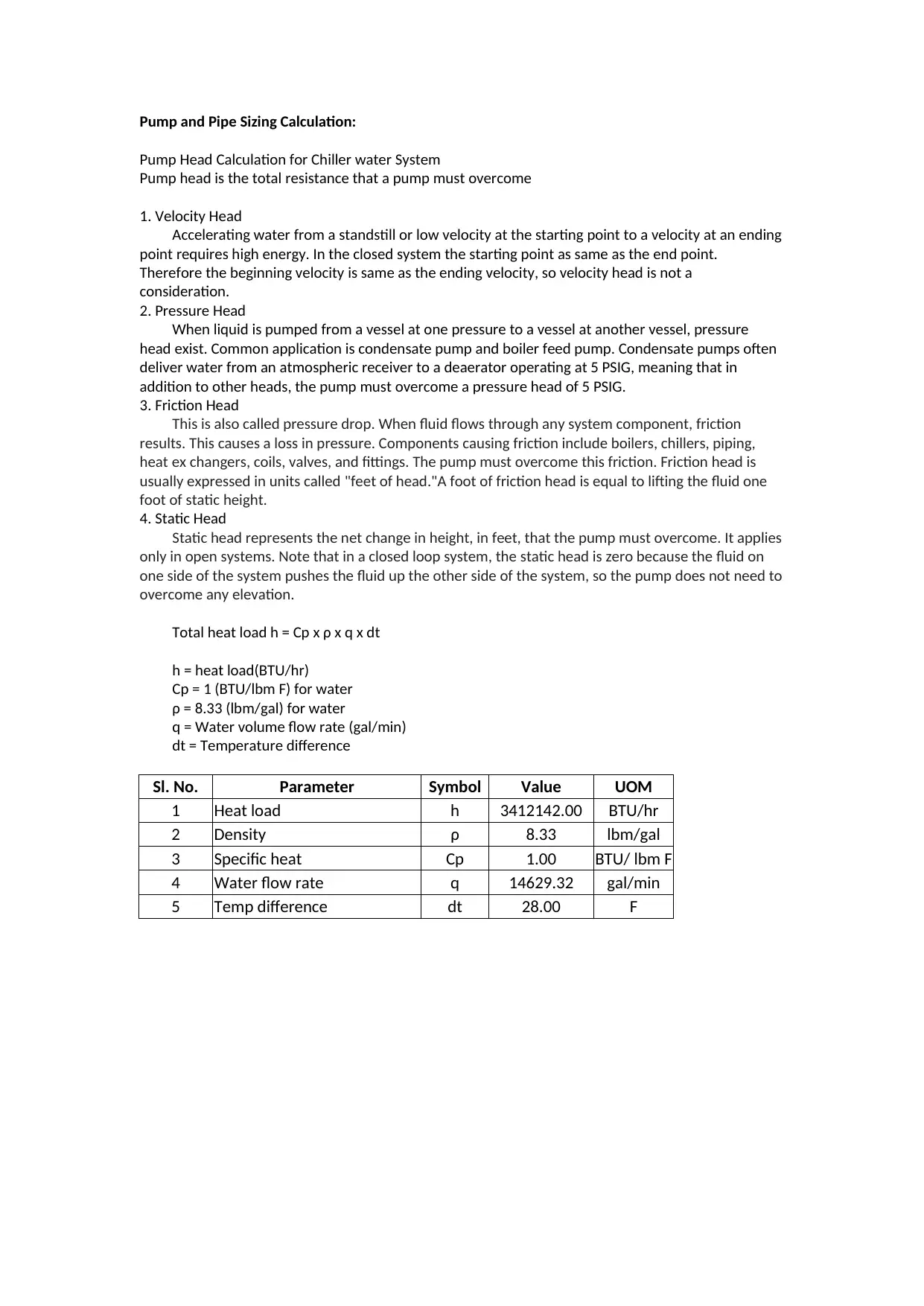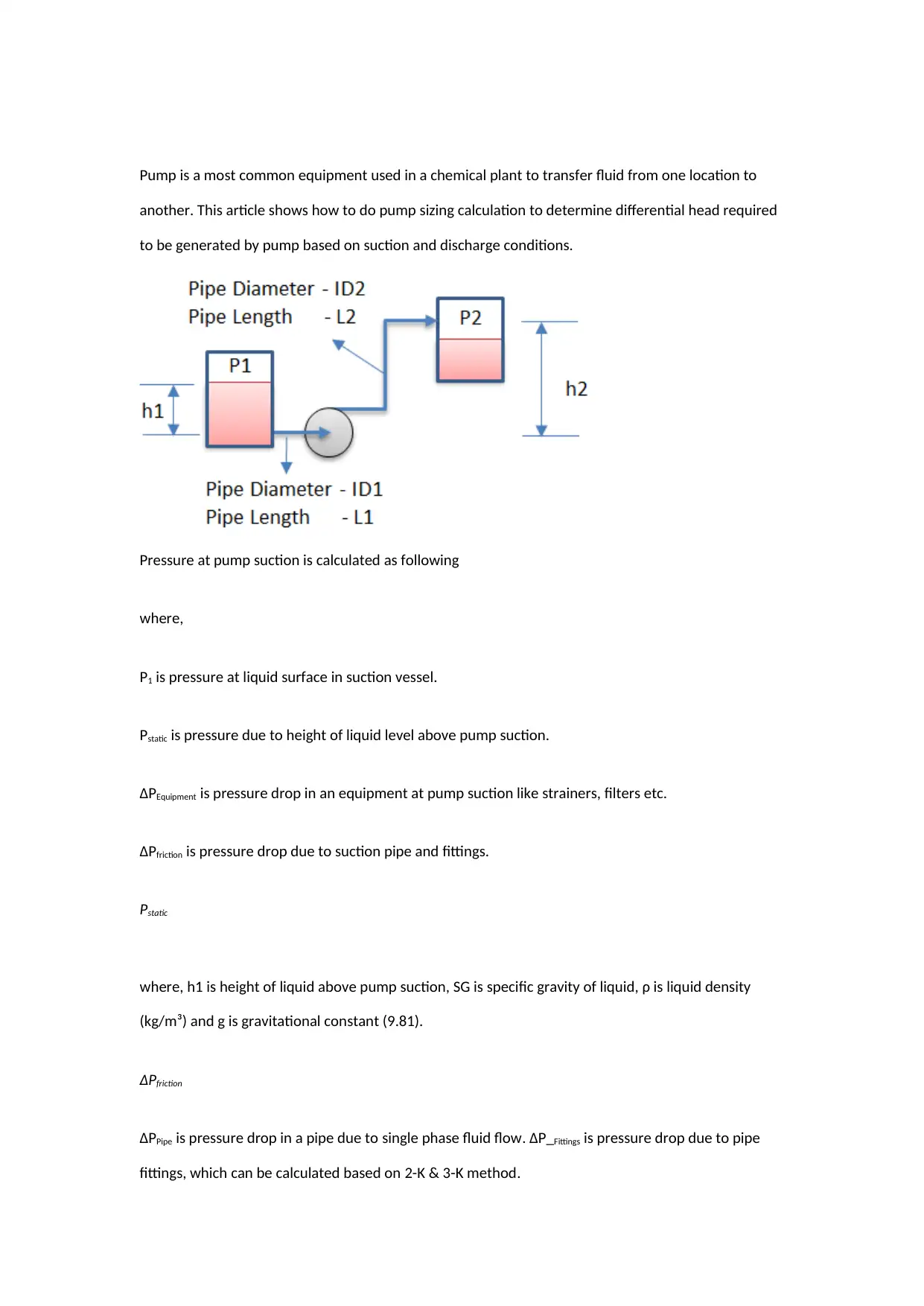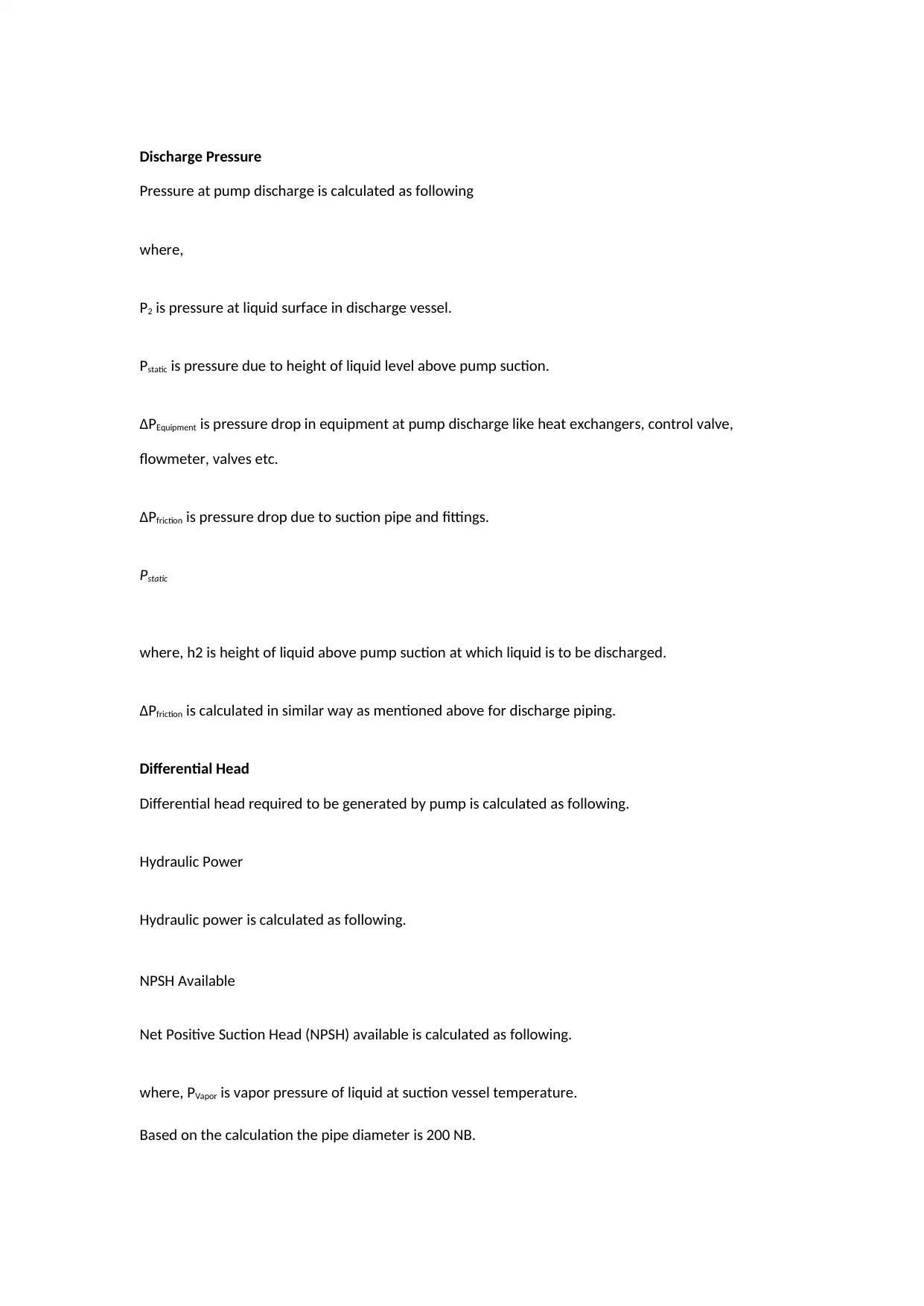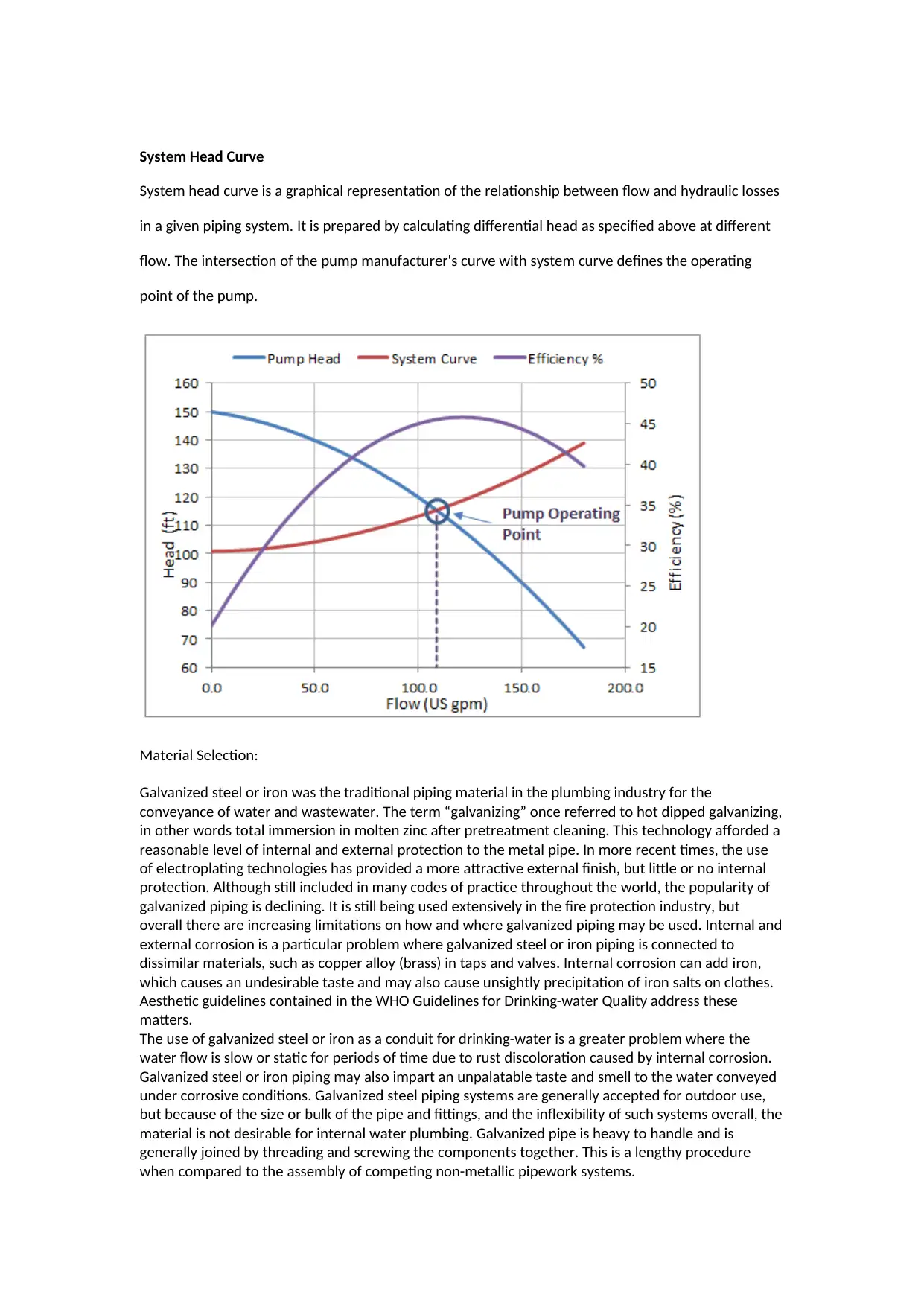Pump and Pipe Sizing Calculation: Chiller Water System - Engineering
VerifiedAdded on 2023/04/22
|5
|1140
|375
Practical Assignment
AI Summary
This assignment provides a detailed analysis of pump and pipe sizing calculations for a chiller water system, a critical component in HVAC design. It begins by explaining the different types of head that a pump must overcome, including velocity head, pressure head, friction head, and static head, and provides the relevant formulas for calculating each. The assignment then details the calculation of total heat load, water flow rate, and temperature difference within the system. It delves into the process of determining pressure at both the pump suction and discharge points, including the factors like static pressure, equipment pressure drop, and friction losses in pipes and fittings. The core of the assignment is the calculation of differential head and hydraulic power, essential parameters for pump selection. The concept of Net Positive Suction Head (NPSH) available is also covered. Furthermore, the assignment explains the system head curve, its importance, and how it intersects with the pump manufacturer's curve to define the operating point. The assignment concludes with a discussion on material selection, specifically focusing on the use of galvanized steel or iron for piping, its advantages, and its limitations, especially concerning corrosion and its effects on water quality. This assignment serves as a practical guide for mechanical engineers and students in understanding and performing pump and pipe sizing calculations.
1 out of 5







![[object Object]](/_next/static/media/star-bottom.7253800d.svg)